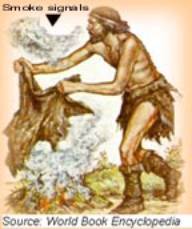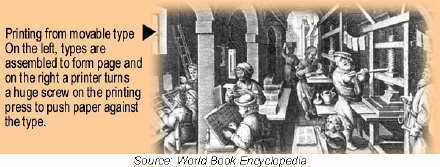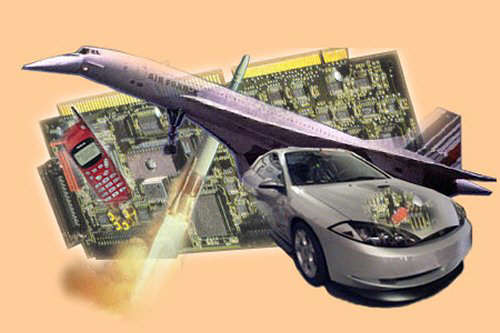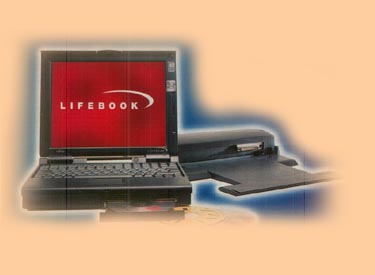Annalie Lota
Information and Communication Technology CN632
PUP Graduate School
Term Paper No. 1
-
Term Paper 1
IntroductionWe live in a world of communication, which is the sharing of information and entertainment by speaking, writing and various other methods. Communication is expanding everyday and without it we would be isolated. Our civilization has made a lot of progress due to the development of a wide range of communication means. The mass media govern our lives, and we learn a lot by listening to the radio, television and reading the daily news. Answering our telephone and our letters, moving our hands, talking are all examples of our personal interaction with others. The people we meet, and the knowledge we share makes us different human beings. At home, in the school, in the business and industry and in world affairs we always have to face the demands of a fast running world revolving around the magic word communication.
|
Prehistoric Times
|
||
|
Prehistory, which occurred about 30000 BC, is the time before written records appeared. However, since that time, early people found the need for communication. The early ways used for communicating information by those early people were most probably by sounds and gestures. Experts who study language and prehistoric ways of life think that language developed gradually and began at first as an imitation of sounds in nature, such as the barking of certain animals and the howling of the wind.
|
|
|
|
The first steps towards written language were paintings and drawings, also known as Paleolithic art, the earliest art. This occurred during the late Paleolithic or Old Stone Age period. Prehistoric artists began to use a series of pictures to tell a story, such as the story of a good hunting trip or a violent storm. Gradually, people developed a system of small pictures that stood for most common objects and ideas. Such a system is known as pictographic writing. |
|
|
|
The Sumerians were the first to develop pictographic writing, about 3500 BC. The vocabulary, grammar, and syntax of the Sumerian language do not appear to be related to those of any other known language. This oldest language was written in cuneiform script. Its earliest records date from about 3000 BC; after about 2000 BC it was no longer spoken, but it continued in use as a literary language until cuneiform writing died out (circa 1st century BC). Pictographic writing worked well for familiar things, but people had difficulty writing new or unusual words. Gradually, they learned to make each symbol represent a sound instead of an object or idea. As a result, they could write any word in the spoken language. After language developed, people exchanged news chiefly by word of mouth.
|
||
Ancient times
|
||
|
Writing was the chief means of communication in those days. Rich people hired professional messengers who carried letters on foot, on horseback or by ship and army people also used homing pigeons. The Greeks developed a fast method to carry messages from city to city in 500 BC. The system involved brick walls built close to each other and along which were holes representing the letters of the alphabet. People built fires through these holes and a watcher on the next wall relayed the message. This was called a visual telegraph The ancient Romans also had a hand written paper called “Acta Diurna” which meant daily events.
|
|
|
Printing
|
|
Printing started during the renaissance from the 1300’s to the 1600’s. It was a period of great intellectual activity and books were in great demand. It solved many problems and Asia discovered it before the Europeans who only discovered it in the 1400’s. The first printers made playing cards by block “block printing”. A card was carved in on a piece of wood then the inked image was pressed against it and this same method was used for books
Movable type of printing made life easier for printers; the letters could be separated, re-arranged and used again. Gutenberg was the one who invented the first printing press in Europe and it became the most important means of mass communication in Europe. However people thought it was black magic because it was too quick and they wondered why all books looked exactly the same. So they decided to print Bibles and religious books. As a result people started to question the Roman Catholic Church and the Protestant Churches were then established.
|
1600's to 1700's
|
||
|
New inventors revolutionized communication
and a steam engine to power press was devised by a German man called
Friedich Evening. Newspapers produced in mass, made communication even
faster between communities of the world. However, rapid communication
did not develop until the electric telegraph was invented and allowed
messages to be sent over wires in seconds. Morse also developed an
apparatus which was able to send information via the cables in the form
of a code made up of dots and dashes; this system is known as the Morse
code and is still being used widely by Radio Officers on board ships. |
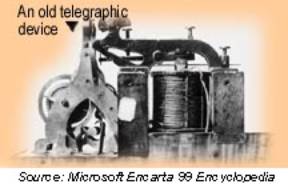 |
|
Photography
|
||
|
Photography also aided communication; many American, British, and French
scientists contributed to its development, and no one person can be
called the inventor of photography. In 1826, a French physicist named
Joseph Niepce made the first permanent photograph. Niepce's technique,
which he called heliography, involved exposing a metal plate to light
for about eight hours. A result, he could only photograph such immovable
objects as houses because moving object would form no image |
||
|
The French painter Louis J.M Daguerre
worked as Niepce's partner for several years. In the 1830's, Daguerre
developed an improved type of photograph called a daguerreotype. A
daguerreotype took only a few minutes to be exposed. About the same
time, the British inventor William Henry Fox Talbot invented a method of
photography that used a paper negative instead of a metal plate. Fox
Talbot's invention, which he called a talbotype or calotype, was not
widely used because it produced less clear pictures than a
daguerreotype. |
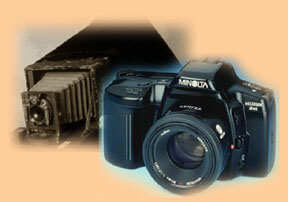 |
|
Start of the Electronic Age
|
|||
|
During the electronic age in the 1900’s
people used electronic knowledge to send messages to space. The radio,
television and other wonders of modern communication were possible.
British born Maxwell dealt with theories about travelling the speed of light. Wireless telegraph, known as “radio” was born in 1895 |
|
||
|
Radio is the transmission or reception of electromagnetic radiation in
the radio frequency range from one place to another without wires. Only
a transmitter and a receiver need to be used for the propagation and
interception of the radio waves. These waves carry information-bearing
signals that may be encoded directly on the wave by periodically
interrupting its transmission like a telegraph on the carrier frequency
by a process called MODULATION, e.g., amplitude modulation (AM) or
frequency modulation (FM) Once the
basic signals have been separated from the carrier wave, they are fed to
a loudspeaker or cathode-ray tube, where they are converted into sound
and visual images, respectively. Some celestial bodies and interstellar
gases emit relatively strong radio waves that are observed with radio
telescopes composed of very sensitive receivers and large directional
antennas. Long-range radio signals enable communications between
astronauts and ground-based controllers and carry information from space
probes as they travel to and encounter distant planets. The invention of
the TRANSISTOR and other microelectronic devices led to the development
of portable transmitters and receivers. Military applications of radio
include the proximity fuse and various types of reconnaissance
satellites. Special receivers to determine once position may use radio
signals sent by navigation satellites. Vehicles also use Citizens band
(CB) radios, operating at frequencies near 27 megahertz for
communication. |
|||
Citizen Band RadioCitizens band radio is a method of short-distance communication used by private citizens. It operates on the citizens band (CB), a group of radio frequencies that many nations reserve for private use.
|
|||
Information Theory (II)
Citizen Band Radio is most frequently used
for conversations between places that are not linked by telephone. Many
motorists and truck drivers use it to talk with other highway travelers
or people who are in an office or at home. In the United States, there are no licensing requirements for the operation of citizens band radios. But Canada requires a CB transmitter of more than one-tenth watt to be licensed. A Canadian citizen may obtain a General Radio Service license from the nearest district office of the Department of Communications.
|
|||
Information Theory (III)Television receiver can also be defined as the television set most people have in their homes. It normally receives a transmitted signal via an aerial cable and converts this radio frequency (RF) signal (or more precisely UHF signal) into picture plus color and sound. Most microcomputer have sockets which gives a signal suitable for displaying the output on a television receiver but it is necessary to ‘tune’ the television to the required channel the first time this is done. Some sets are receiver/monitor and these have a second input socket, which accepts a video signal from a microcomputer. This provides a better quality picture particularly when displaying detailed graphics. For the clearest quality color picture the red, green and blue signals are sent separately and this requires an RGB computer output and an RGB monitor.
|
|||
Information Theory (IV)Cellular telephone is a wireless telephone that transmits messages with radio signals. It enables people to communicate over a wide area by using a network of radio antennas and transmitters arranged in small geographical areas called cells. Cells vary in size and number, based on the network's extent. Callers use a cellular telephone unit, which is actually a radio transmitter and receiver. The unit enables a user to make or receive voice calls and, with special equipment, to send or receive computer data and facsimile (fax) transmissions. Radio waves send the call to an antenna transmitter in the cell where the call is made. The transmitter relays the message to a mobile telephone switching office (MTSO). The MTSO transmits the message to a local telephone company, which sends the call to the receiver or to a long-distance company for completion. As the caller moves, the network automatically passes the call from one cell to the next cell without interruption. There are three types of cellular phones. Installed phones are mounted in a vehicle, such as an automobile, and powered by the vehicle's electrical system. Transportable phones have their own carrying case and are powered by a battery pack. Portable phones are battery-powered units small enough to keep in a coat pocket. The first commercial cellular system went into operation in 1983 in the United States. Cellular service is now available in much of the world. Many developing nations have used cellular technology to provide telephone service in remote areas without installing phone lines.
|
|||
Satellites
|
|||
|
|||
Navigation Satellites
|
|||
|
These are other types of satellites that
are designed specially to aid navigation at sea, in the air, and on
land, for example a navigator can locate the exact position of his ship
and calculate his way he has to go. Two major navigational satellite
systems have been launched into orbit, both by the U.S. A total of 24
NAVSTAR satellites are used. Precise to within a few feet for
military uses and about 300 ft (90 m) for non-military uses, the GPS can
also be used for non-navigation purposes, such as surveying, tracking
migrating animals, and plotting the crop yields of small sections of
farmland.
|
|
 |
|
Satellite, ArtificialRocket-launched satellites are bodies placed into orbit around the earth or, occasionally, another celestial bodies launched by man. A satellite in circular orbit at an altitude of 22,300 mi (35,880 km) has a period of exactly 24 hr, the time it takes the earth to rotate once on its axis; such an orbit is called synchronous. A satellite is known to be geostationary if the satellite is launched in such a way that it appears to be motionless, i.e. it orbits around the earth at the same speed as the earth’s rotation. The US to survey the earth’s resources by means of special television cameras and radiometric scanners has also launched several Landsat remote-imaging satellites. Russia and other nations have also launched such satellites; the French SPOT satellite provides higher-resolution photographs of the earth. Reconnaissance SatellitesThese types of satellites are used by a country to provide intelligence information on the military activities of foreign countries. There are four major types. Early-warning satellites that detect enemy missile launchings; nuclear-explosion detection satellites that are designed to detect and identify nuclear explosions in space and photo-surveillance satellites to provide photographs of enemy military activities. These satellites can also be divided into two other categories, namely close-look satellites which provide high resolution photographs that are returned to earth via a re-entry capsule and area survey satellites which provide lower resolution photographs that are transmitted to earth via radio. Afterwards satellites were designed to combine these two functions. Other satellites use radar to provide images of enemy activity when there is cloud cover or it is dark. Electronic-reconnaissance (ferret) satellites are able to pickup and record radio and radar transmissions while passing over a foreign country. Two countries that have being launching a lot of reconnaissance satellites since 1960 are the US and Russia (former U.S.S.R). Weather SatellitesWeather satellites (or artificial satellites) are used for the gathering of data on a global basis for improvement of weather forecasting. They usually provide information about cloud cover, storm location, temperature and heat balance in the earth's atmosphere. They are sometimes also used as instruments to locate ships and aircraft and track the movement of marine life and pollution. The first experimental weather satellite was Tiros 1,launched by the U.S. in 1960. Russia, India, Japan, and the European Space Agency also operate weather satellites
|
|||
ComputerA computer is an electronic data-processing machine that has three components where the input and output may be digital or analogue and the process would involve storage, control and arithmetical operations. A computer differs from most other machines because it is versatile and not restricted to doing one particular job. Analogue computes are machines designed to work on data which is represented by some physical quantity which varies continuously; for example, the turning of a wheel or changes in voltage can be used as input. They are thus said to be operating in real time because they respond as things happen and are widely used for research in design where many different shapes and speeds can be tried out quickly. A computer model of a car suspension allows the designer to see the effects of changing size, stiffness and damping.
|
|||
Telecommunications
The sending of data from one place to
another by radio waves or cables is known as telecommunications. The
earliest form of telecommunication in the 1990's was visual signaling
with flags, lamps, or smoke. Nowadays, telecommunication refers to
various electrical and electronic systems. Visual images and printed
materials are sent and received in a fraction of a second, via modern
telecommunication systems. |
|||
|
Some common telecommunication systems are televisions, telephones and radios while the other kinds of systems are used solely by industries. Information such as airline reservations and banking transactions (Electronic Funds Transfer) are transmitted by such systems. Teleprinting / telephoto are essential to newspapers for obtaining stories and photographs worldwide. Space stations and the earth communicate through telecommunications systems, which transmit messages via satellite (see telecommunication satellites), radio and underground or seafloor cables. Radio waves are used for transmission of television and radio
|
|||
AdvertisingAdvertising has now become a worldwide phenomenon and it has its heaviest concentration in the United States. Advertisements are used for many purposes and have many different possible effects. It fact, advertising is a form of language. Advertisers have brought the art of propaganda very near to perfection and their influence is immense. The advertiser has something to sell, he wishes to present his goods in the most favourable manner possible, he makes us feel a want for his goods. Accordingly, he will seek to arise our emotions, appealing to our desire to be healthier or more beautiful, or better dressed than we are. For example, within a given country it is common to find something that might be considered highly fanciful advertising for consumer goods such as toothpaste, detergents, or soft drinks, and highly technical messages dealing with construction equipment, medical supplies, or computer services. The advertisers themselves can include huge multinational firms, special interest groups, local shopkeepers, and individuals. Their intents may also range from altering behavior to affecting the way people think about a particular social or economic position. However, the results of an advertising campaign can range from enormous success to a total waste of the advertiser's money. JournalismJournalists inform the general public about daily events in their community, their nation and world's current affairs. It has now become a powerful means of communication and information, but a terrible weapon when manipulated by evil spirits as people wait for the journalist's opinion to make up their own mind about particular events. Journalist have several media at hand to propagate information and these include newspapers, magazines, radio, and television; in other words, news media. In all democracies, the freedom of press prevails and people depend on it for the fair and truthful reporting of current events. In countries where the government controls everything, the press is used as a political tool to shape the mind of the population PropagandaPropaganda is one-sided communication designed to influence people's thinking and actions. A television commercial or a poster urging people to vote for a political candidate might be propaganda, depending on its method of persuasion. Propaganda differs from education in democratic societies. But education in a dictatorship can involve teaching children and youth by techniques that could be classified as propaganda. Educators in democratic societies teach people how to think, but propagandists tell them what to think. Most educators are willing to change their opinions on the basis of new evidence, but propagandists ignore evidence that contradicts them. Educators present all sides of an issue and encourage debate. Propagandists build the strongest possible case for their views and discourage discussion. The intention of the communicator to influence or deceive is an important issue in identifying propaganda. However, experts disagree about what is propaganda and what is not, and whether propaganda differs from other forms of persuasion, such as advertising and political campaigning. Some look upon all slanted communication as propaganda. Others believe that the method of persuasion determines whether a message is propaganda. For example, the majority of advertisers and political campaigners function openly and state their purposes truthfully. Other advertisers and political campaigners present any combination of truths, half-truths, lies, and distortions that they think will most effectively influence their audience. Some experts say all these people are propagandists. Others regard only the second group as propagandists. Some people consider propaganda neither good nor bad. For example, many favor the use of propaganda to raise money for charity. Other individuals argue that the public needs reliable information to make wise decisions, and that propaganda blocks the spreading of such information. They also fear that propaganda deadens people's power of reasoning. The results of some propaganda may be short term and relatively insignificant, such as the purchase of a product. Other types of propaganda can have more serious results. The greatest use of propaganda occurs during wartime. At such times, government propaganda campaigns urge people to save resources, volunteer for military service, support the war effort, and make sacrifices necessary for victory. Psychological warfare is a type of propaganda that aims to weaken the enemy's will to fight or belief in their government. A related technique, called brainwashing, is used against prisoners. It combines political propaganda with harsh treatment to reduce a prisoner's resistance. How propaganda worksPropaganda appeals to its audience in three ways: firstly, it calls for an action or opinion that it makes seem wise and reasonable; secondly, suggests that the action or opinion is moral and right and thirdly, provides a pleasant feeling, such as a sense of importance or of belonging. Many propaganda methods are common-sense techniques that resemble those of persuasive speaking. These techniques include gaining people's trust, simplicity and repetition, and the use of symbols. However, propagandists often use such underhanded methods as distortion, concealment, and lying. In nations ruled by dictators, governments increase the effectiveness of their propaganda by using censorship. |
|||

